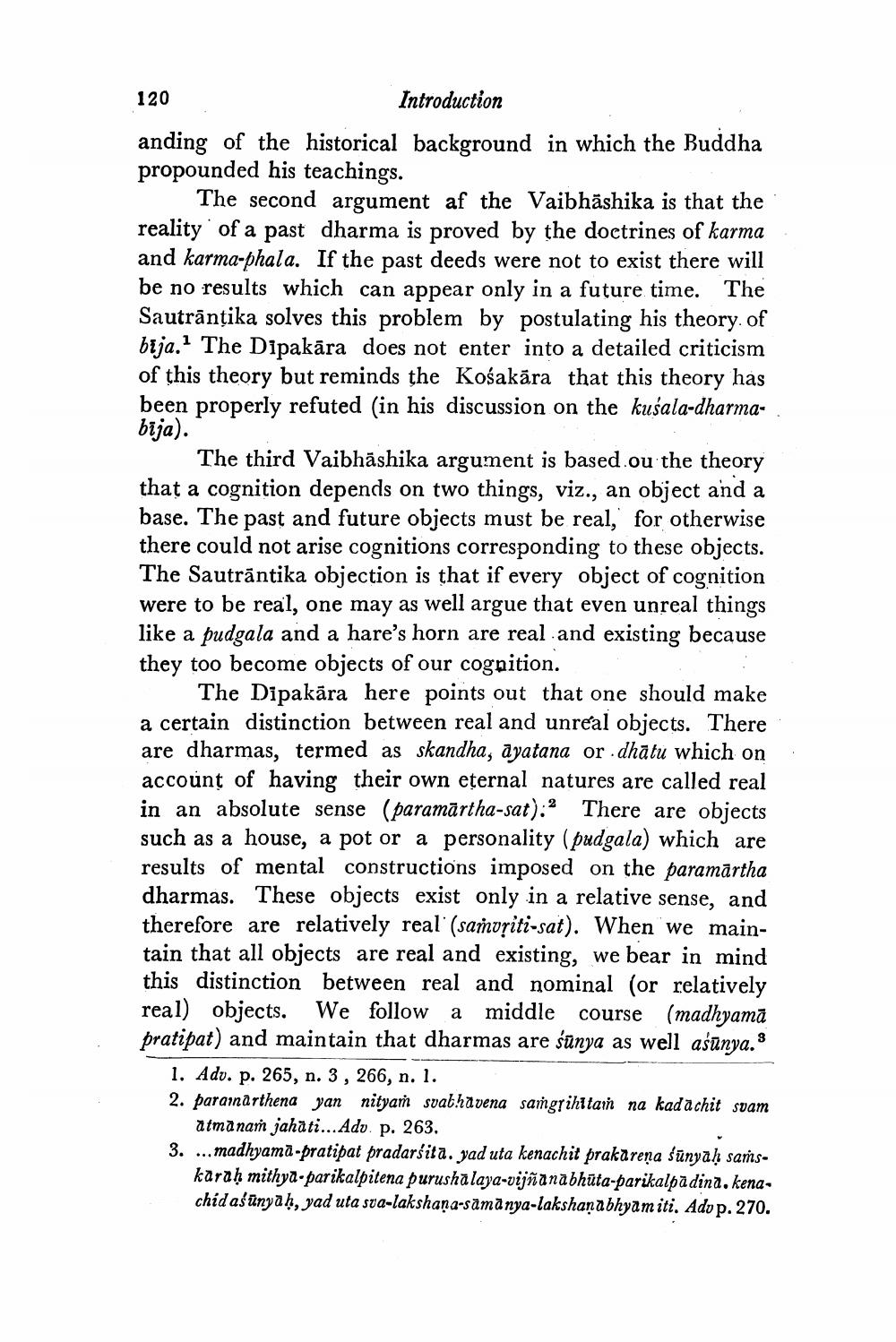________________ 120 Introduction anding of the historical background in which the Buddha propounded his teachings. The second argument af the Vaibhashika is that the reality of a past dharma is proved by the doctrines of karma and karma-phala. If the past deeds were not to exist there will be no results which can appear only in a future time. The Sautrantika solves this problem by postulating his theory of bija." The Dipakara does not enter into a detailed criticism of this theory but reminds the Kosakara that this theory has been properly refuted (in his discussion on the kusala-dharmabija). The third Vaibhashika argument is based.ou the theory that a cognition depends on two things, viz., an object and a base. The past and future objects must be real, for otherwise there could not arise cognitions corresponding to these objects. The Sautrantika objection is that if every object of cognition were to be real, one may as well argue that even unreal things like a pudgala and a hare's horn are real and existing because they too become objects of our cognition. The Dipakara here points out that one should make a certain distinction between real and unreal objects. There are dharmas, termed as skandha, ayatana or .dhatu which on account of having their own eternal natures are called real in an absolute sense (paramartha-sat):2 There are objects such as a house, a pot or a personality (pudgala) which are results of mental constructions imposed on the paramartha dharmas. These objects exist only in a relative sense, and therefore are relatively real (samotiti-sat). When we maintain that all objects are real and existing, we bear in mind this distinction between real and nominal (or relatively real) objects. We follow a middle course (madhyama pratipat) and maintain that dharmas are sunya as well asunya. 1. Adv. p. 265, n. 3, 266, n. 1. 2. parainarthena yan nityam svathavena samgrihitan na kadachit svam atmanam jahati...Adv. p. 263. 3. ... madhyama-pratipat pradarsita. yad uta kenachit prakarena sunyah sams karah mithya-parikalpitena purushalaya-vijnanabhuta-parikalpadina. kena, chid asunyah, yad uta sva-lakshana-samanya-lakshanabhyam iti. Adv p. 270.




